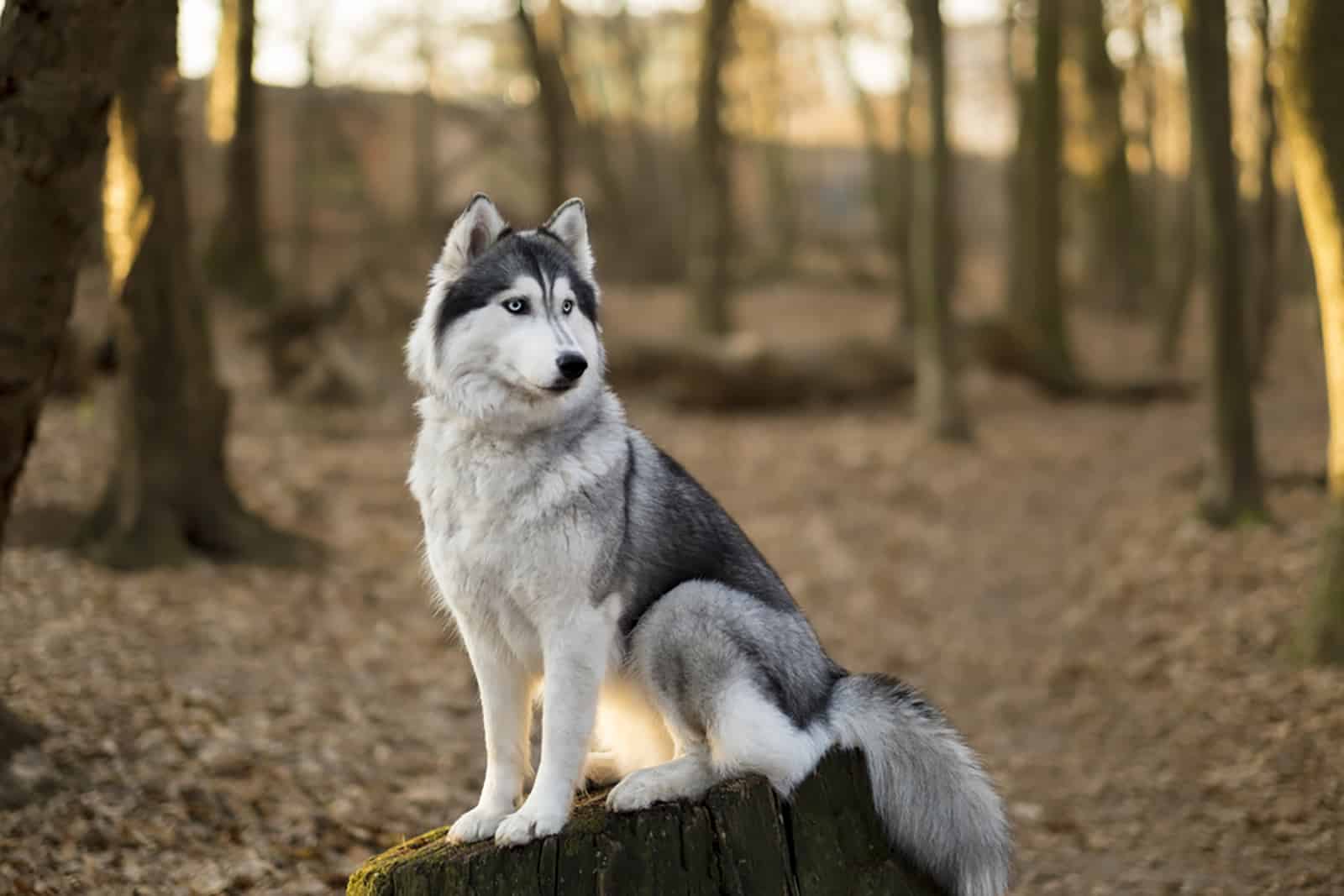From white coats to silvery shades and wolf-like expressions – these are dogs that look like Huskies!
The Siberian Husky is an extremely popular dog breed… and they have every right to be. Huskies are stunningly beautiful and they’re quite charming too. No one can resist Husky’s goofy tricks!
But, Huskies definitely aren’t dogs for everyone. I’m not saying they aren’t sweet – because they are. Remember how the first Huskies used to be nanny dogs?
What I’m trying to say is that Huskies need someone experienced to take care of them. Some people might find the shedding part too difficult to handle.
Others won’t like their occasional stubbornness and will find training them to be a nightmare. To each their own.
If something bothers you about Huskies, but you really want one in your life, then you should definitely check out these 22 dogs that look like Huskies!
1. Alaskan Malamute
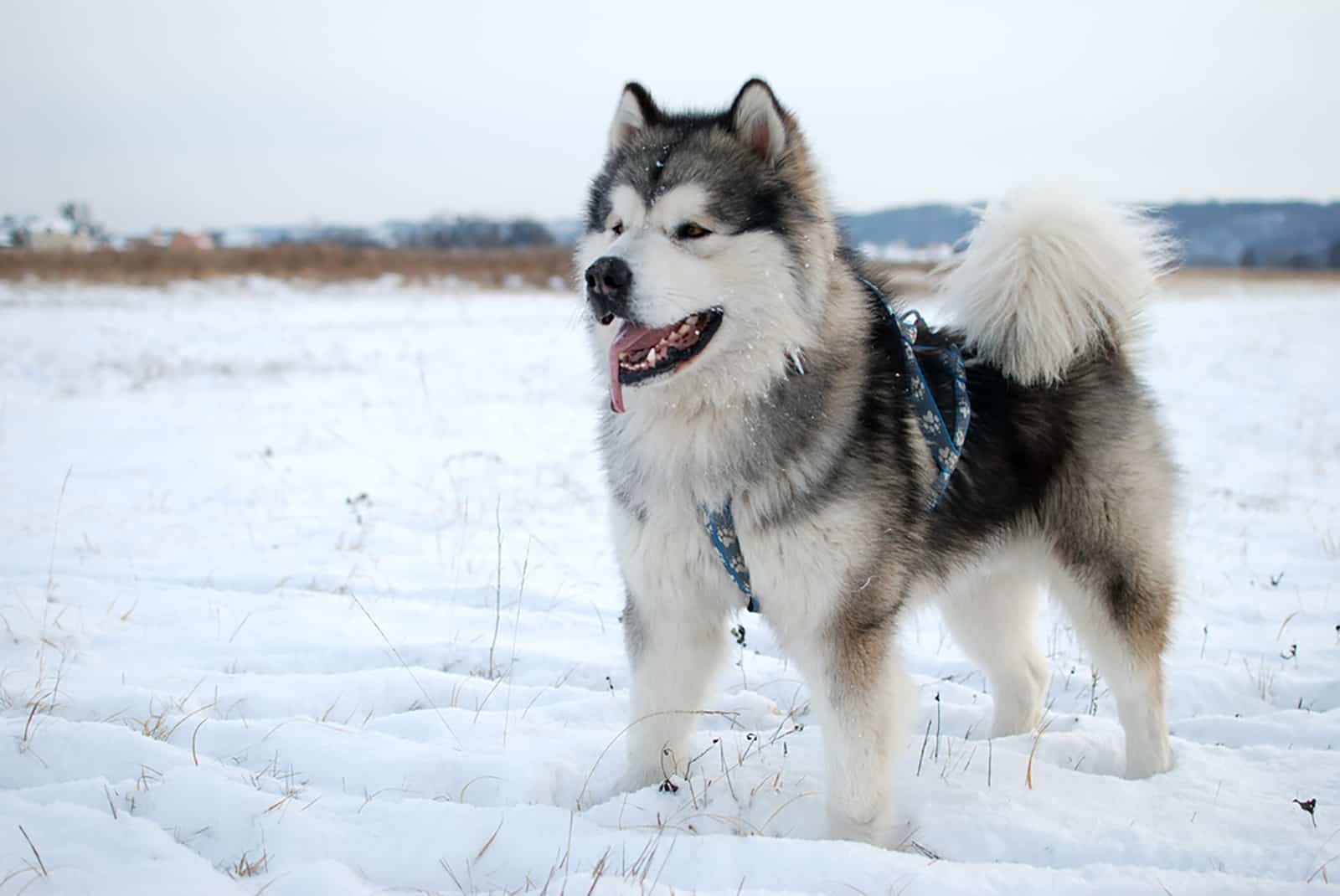
Newbie dog owners and people who aren’t that familiar with Huskies often can’t tell Malamutes and Huskies apart. I don’t blame them. These dogs look a lot like each other.
You can say a Malamute is a bigger, chunkier version of the average Siberian Husky.
What you need to know about dogs that look like Huskies is that some of them actually share a blood connection. The Alaskan Malamute is one of them.
These dogs are significantly bigger than Huskies, weighing over 100 pounds and standing tall at 35 inches at the withers. They’re chunky, muscular, and strong.
In no way are Malamutes fat doggos because they’re highly active all the time. Ask any Malamute breeder and they’ll vouch for that!
Besides possessing incredible strength, often used for sled pulling, Malamutes are also quite beautiful. They come in a variety of coat color combinations. And, yes, their coats do resemble Huskies. However, Malamutes shed even more!
They need an experienced owner, someone that will know how to take care of their rich coats.
In case you’re having trouble finding an Alaskan Malamute in your area, you might try some of the Malamute mixes. They’re easier to find, and a tad bit easier to take care of.
2. Samoyed
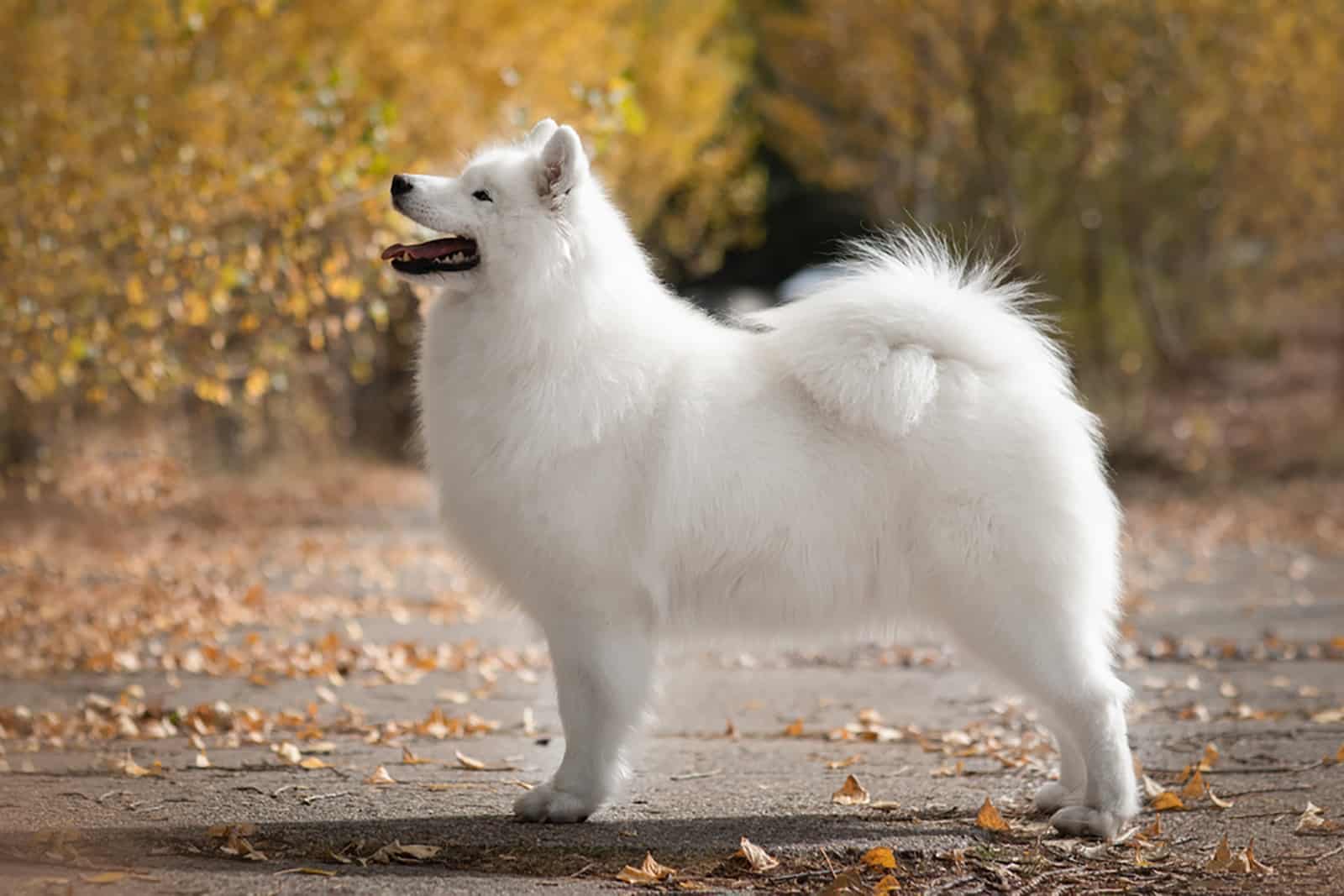
When we compare boy vs girl Samoyeds, we’ll see there’s no visible difference.
However, when we compare Samoyeds and Huskies and whether the two dogs look alike, we’ll notice the difference is quite obvious.
Samoyeds and Huskies aren’t close relatives. The only thing these doggos have in common is their background. Okay, the arctic-type appearance is shared too!
Samoyeds are one of the finest examples of big and fluffy dog breeds. They’re super sweet on the inside and the outside. You can definitely say that Sammies are one of the friendliest dog breeds.
What you can’t say is that Samoyeds are aggressive. They don’t have a single bad bone in them.
People love Samoyeds for their incredible good looks too. Sammies sport colors other than white, but white is their signature look. Their coats are thick and resistant to low temperatures.
Given their origin, it’s only natural to see such coats on Samoyeds.
Samoyeds and Huskies may not look a lot like each other, but they surely make wonderful puppies together. Just look at their love child, the Samoyed Husky mix, otherwise known as the Samusky! It’s the combination of the best traits of both worlds!
3. Alaskan Klee Kai
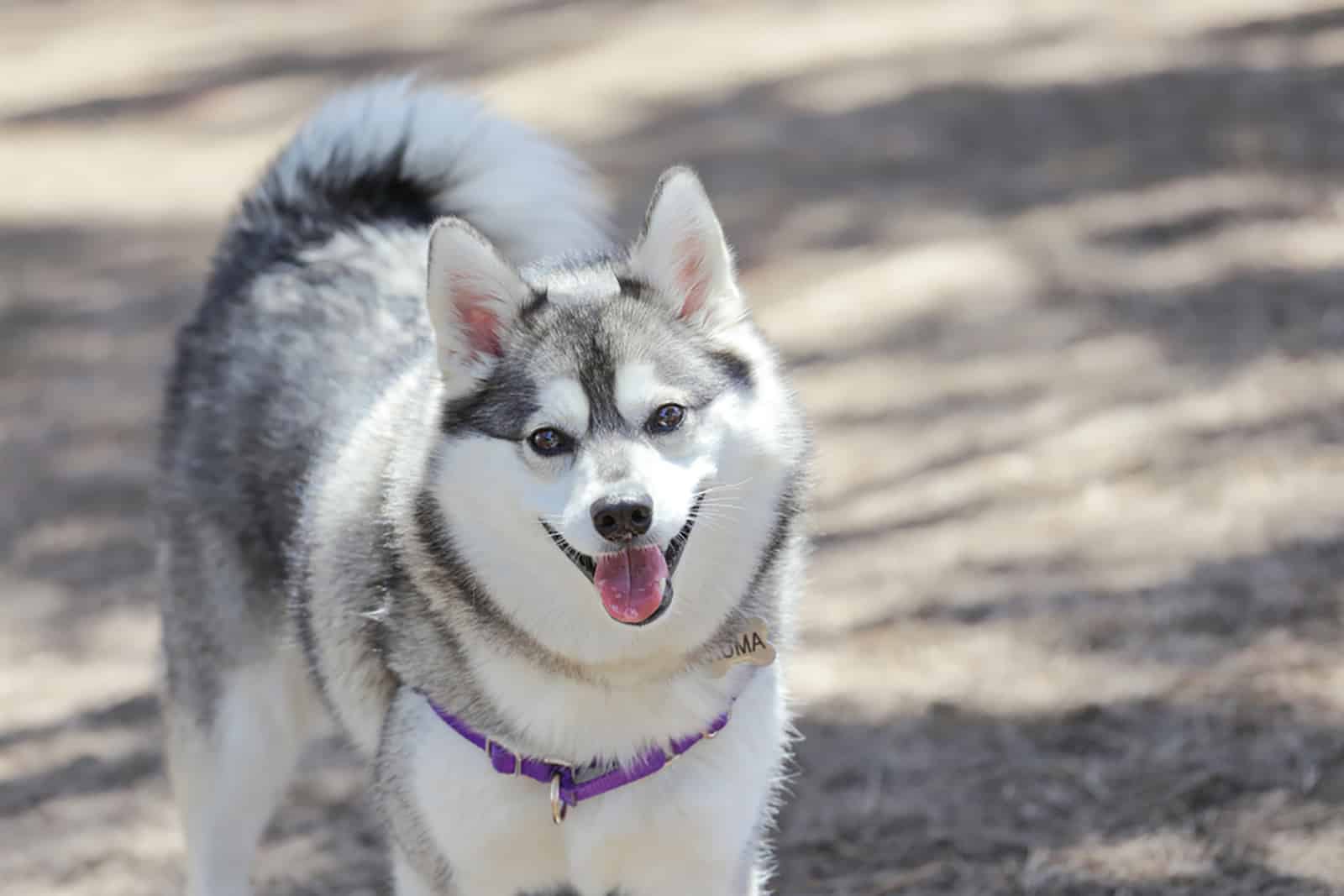
Speaking of Husky cousins…
Have you ever seen the Alaskan Klee Kai? No? Well, I bet you actually have because these good boys look like miniature Huskies! They only look the same, but they aren’t the same.
The Alaskan Klee Kai is a breed of its own, one of the members of the Husky breed group.
When I said miniature, I didn’t joke about it. Klee Kai dogs are really compact and great for having if you have limited space.On average, Klee Kais are between 13 to 15 inches tall.
They resemble a Pomsky, or a Pomeranian Husky mix, thanks to their small size and spitz-like appearance.
However, Klee Kais aren’t as goofy as Huskies. They’re not too playful either! This dog breed is characterized by being really shy and cautious around strangers. It’s a whole other story when they’re around their family members.
Klee Kai dogs love their families and feel more comfortable if they’re surrounded by people they know.
But, don’t be worried! If something’s odd for a Klee Kai, they will let you know that. Just like Huskies, Klee Kais will bark their lungs out to let you know they don’t like something.
4. Tamaskan
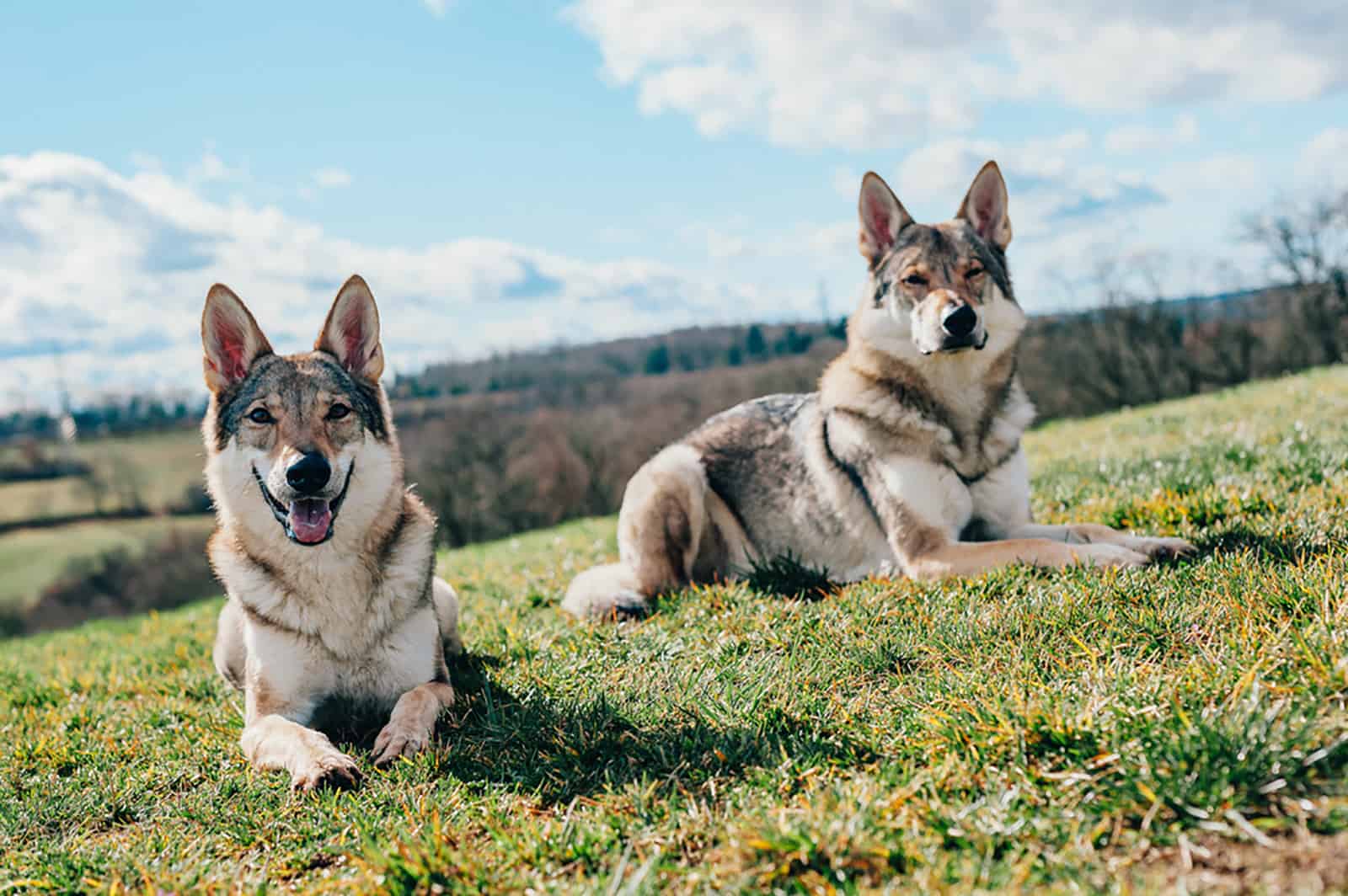
Is there even a Husky that doesn’t shed?
Heavy Husky shedding is a well-known fact. Many people drop the idea of adopting one because they shed insanely, even on a daily basis!
If you want dogs that look like Huskies but don’t shed too much, you can still have a goofy-like Husky buddy in your life.
Meet the Tamaskan dog!
It’s got other great features, but the low-shedding one is probably the best.
These wolf-like dogs are a fairly new breed. They were first bred in Finland back in the 1980s, as a mixture of the Siberian Husky and the German Shepherd. So, sadly, Tamaskans aren’t purebred dogs.
But, they’re still awesome!
Tamaskans are extremely hardworking buddies. You can tell they were purposely bred to assist people. These dogs feel that they are the most useful when they’re performing tasks.
Still, Tamaskans aren’t all work and no play dogs. They possess the playful energy of a Siberian Husky and they know exactly when it’s time to rest and recuperate.
Tamaskans would be ideal dogs for active dog owners, people that have big, spacious yards where Tamaskans could have lots of exercise and play all day.
5. American Eskimo
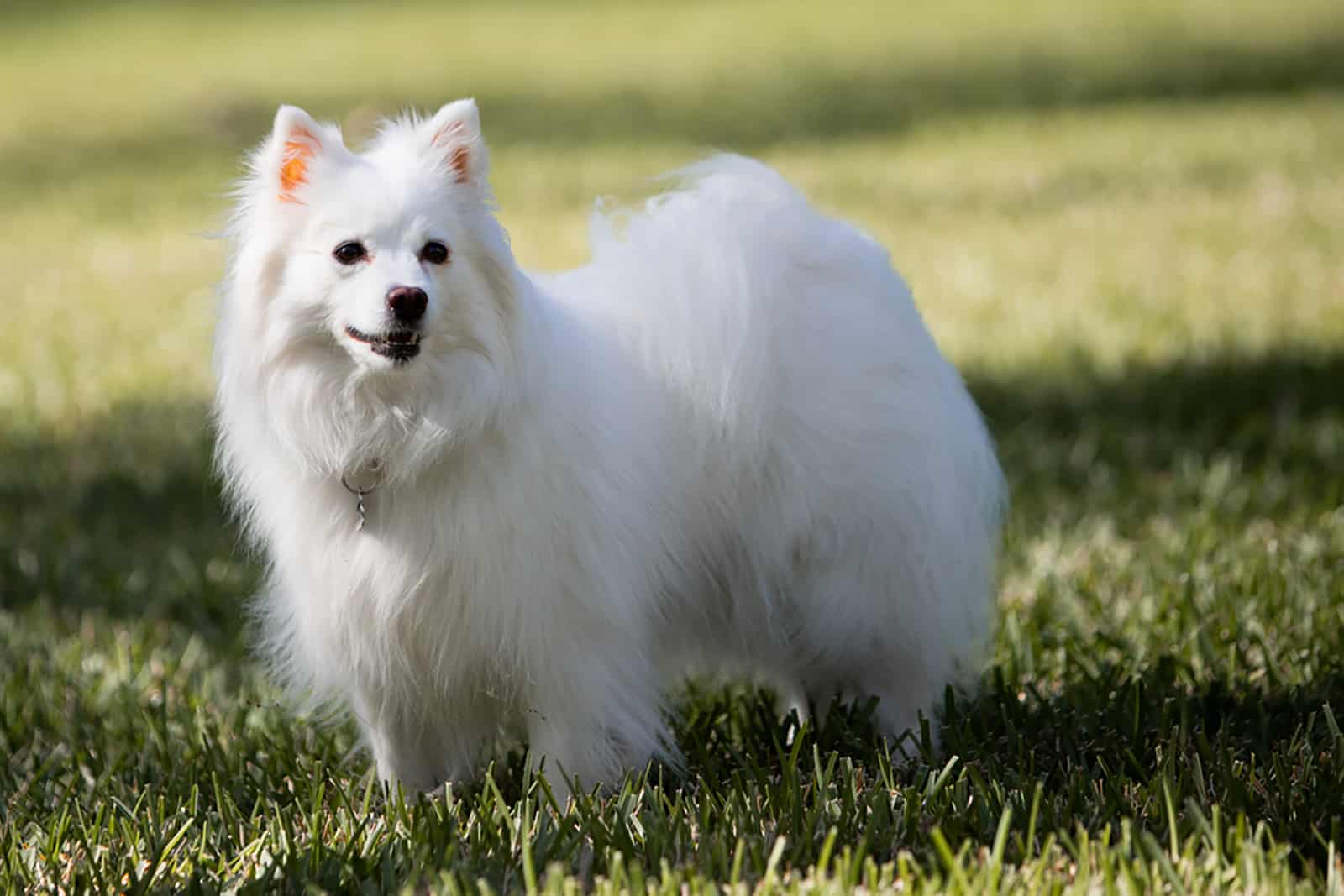
Don’t confuse these dogs with Samoyeds because they’re not the same. The good looks are deceiving. Samoyeds and American Eskimo dogs are two separate purebreds.
They may only look a bit like each other, but once you go in-depth, you’ll notice differences between them.
Still, American Eskimos are one of the dogs that look like Huskies. The long muzzle and the erect eyes are to blame, as well as the thick, temperature-resistant coats.
Even though their name claims these dogs are related to Alaska, they really aren’t. The origins of the American Eskimo are linked to German immigrants that reached the Midwest sometime in the 1800s.
Together, they brought a dog breed, a Nordic pup called the German Spitz.
Because of the war activities in the first half of the 20th century, the German Spitz was renamed and became the American Eskimo.
Eskimo dogs are super friendly and love to be of assistance to humans. They’re working dogs, turn companions, and wonderful family pets.
The American Eskimo is one of those big, fluffy white doggos. They come in three sizes, but the biggest one doesn’t grow past the 10-inch mark.
6. Utonagan
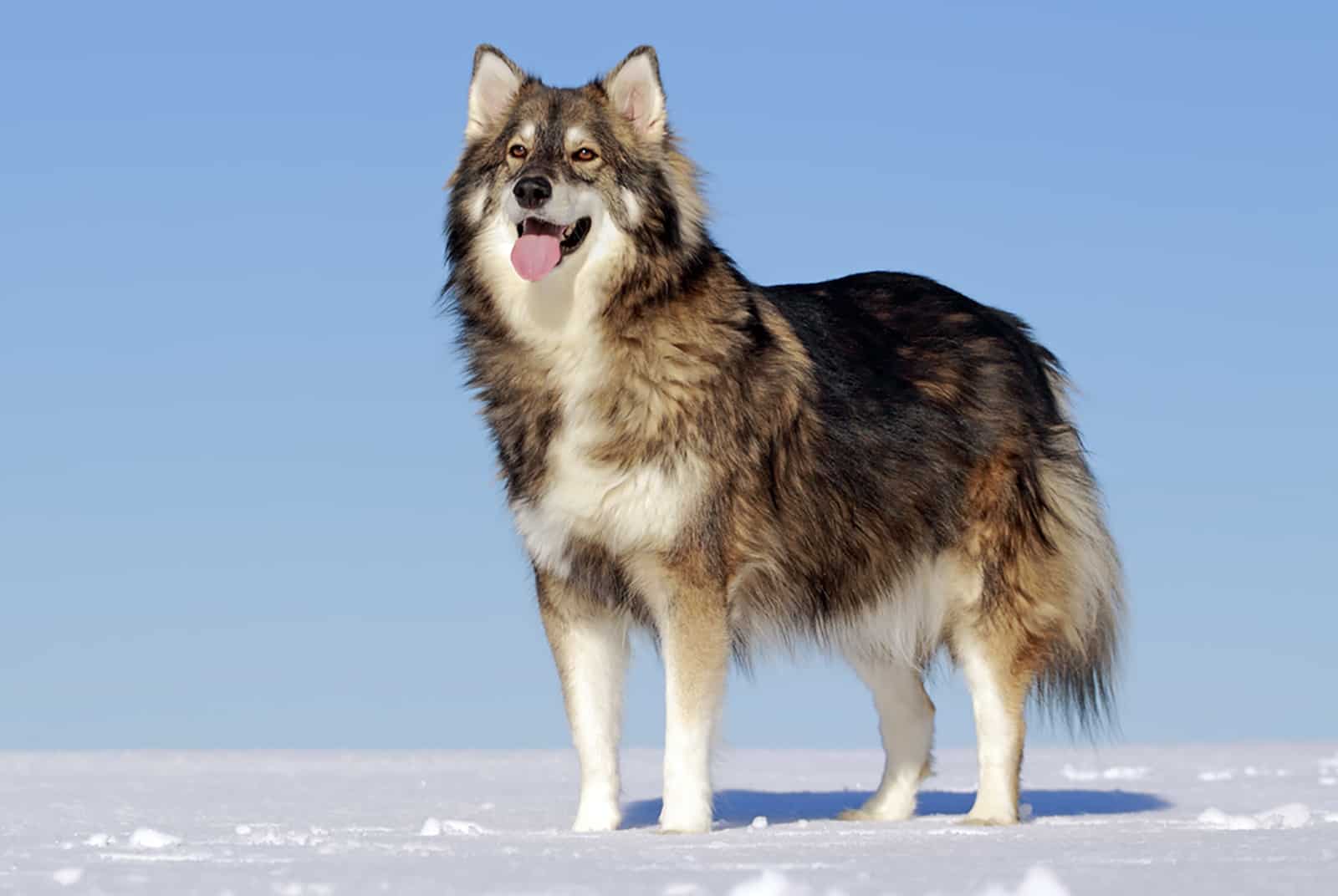
If you don’t mind the shedding, but you want a bigger version of a Husky, then you need the Utonagan.
What’s that, you might ask?
Well, the Utonagan is not as popular as we’d like it to be, but that doesn’t deny the fact it’s spectacular.
The Utonagan is actually one of the Husky mixes. A quite rare one, I might add! This is what you get when you mix a Husky, an Alaskan Malamute, and a German Shepherd.
Although a lot of mixed dogs were bred to be working dogs or watchdogs, the Utonagan wasn’t meant for that purpose. Still, they are hard-working and will listen to their owners.
As I said, Utonagans are big dogs. They aren’t really cut out to live in big cities. Instead, you can find most Utonagans living on farms.
Even though they’re generally friendly, Utonagans can be quite stubborn and hard to train. They will need a firm hand, someone with lots of experience in handling dominant dogs.
Also, Utonagans will need someone that has time to exercise them. If they don’t drain their high energy levels on a daily basis, Utonagans become quite unbearable.
7. Akita Inu
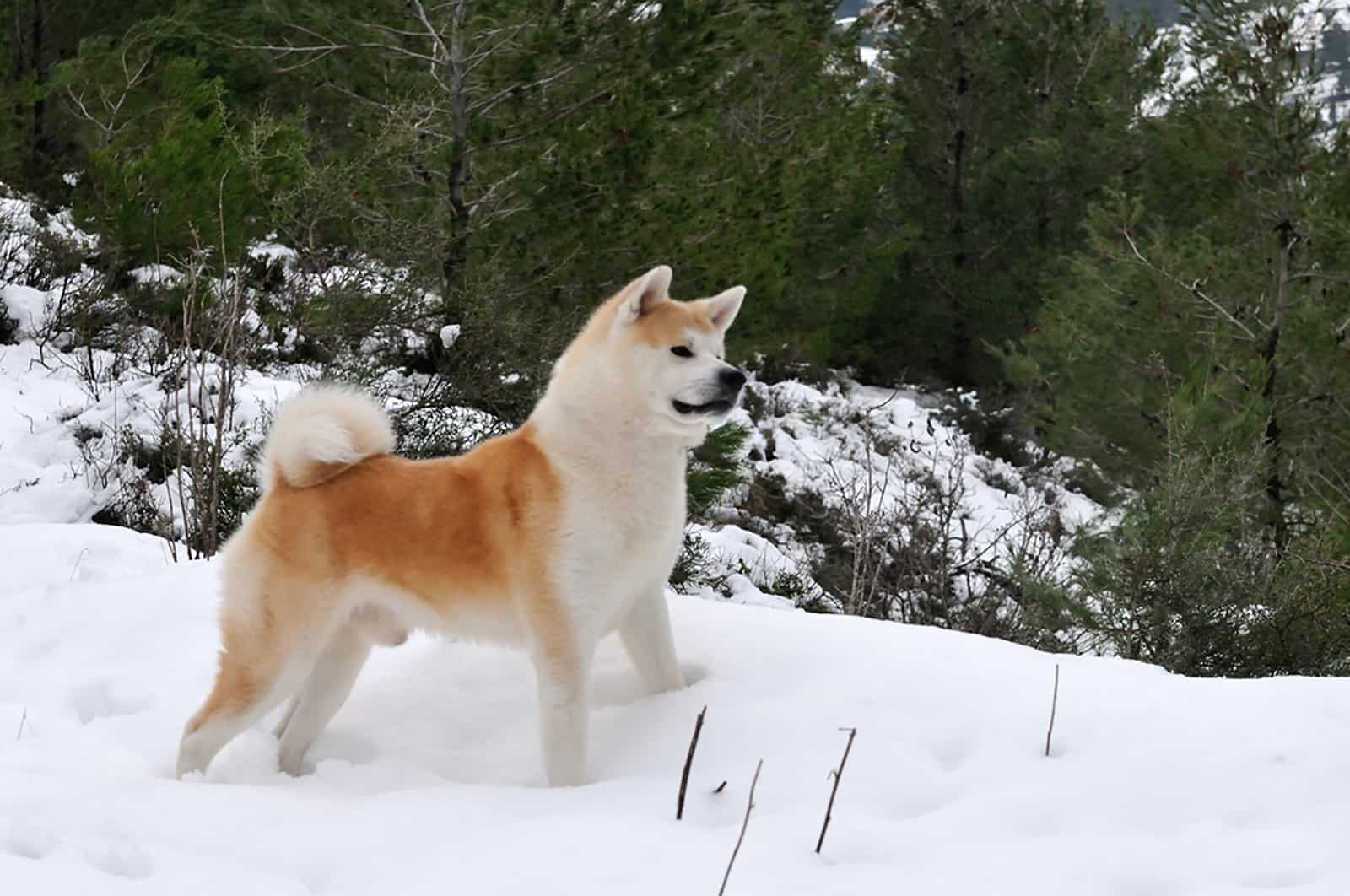
Akita Inus and Huskies have lots of things in common, but I have to point out one thing first: both dogs are extremely loyal. In fact, Akitas were declared the world’s most loyal dog breed. Huskies aren’t far behind.
When you compare the two dogs, you’ll notice Akitas are more closed and reserved with people outside their families. Huskies are cautious but far more friendly.
Akitas prefer the company of their family members, still, they can seem a bit reserved with them from time to time. Simply put, Akitas need some “me time”.
As you may imagine, getting an Akita if you’re a first-time owner isn’t a good idea. You’ll need lots of experience in dog training to teach these dogs what’s right and what’s wrong.
But, don’t let this scare you away from Akitas. They have some great qualities too!
For starters, Akitas are truly beautiful. Even though their signature color is orange, Akitas come in other coat colors. For example, brindle Akitas are even more stunning.
As one of the dogs with pointy ears, Akitas will be easy to recognize in a room full of dogs. They possess incredibly good looks and a charming smile that will surely make you want one!
8. Finnish Spitz
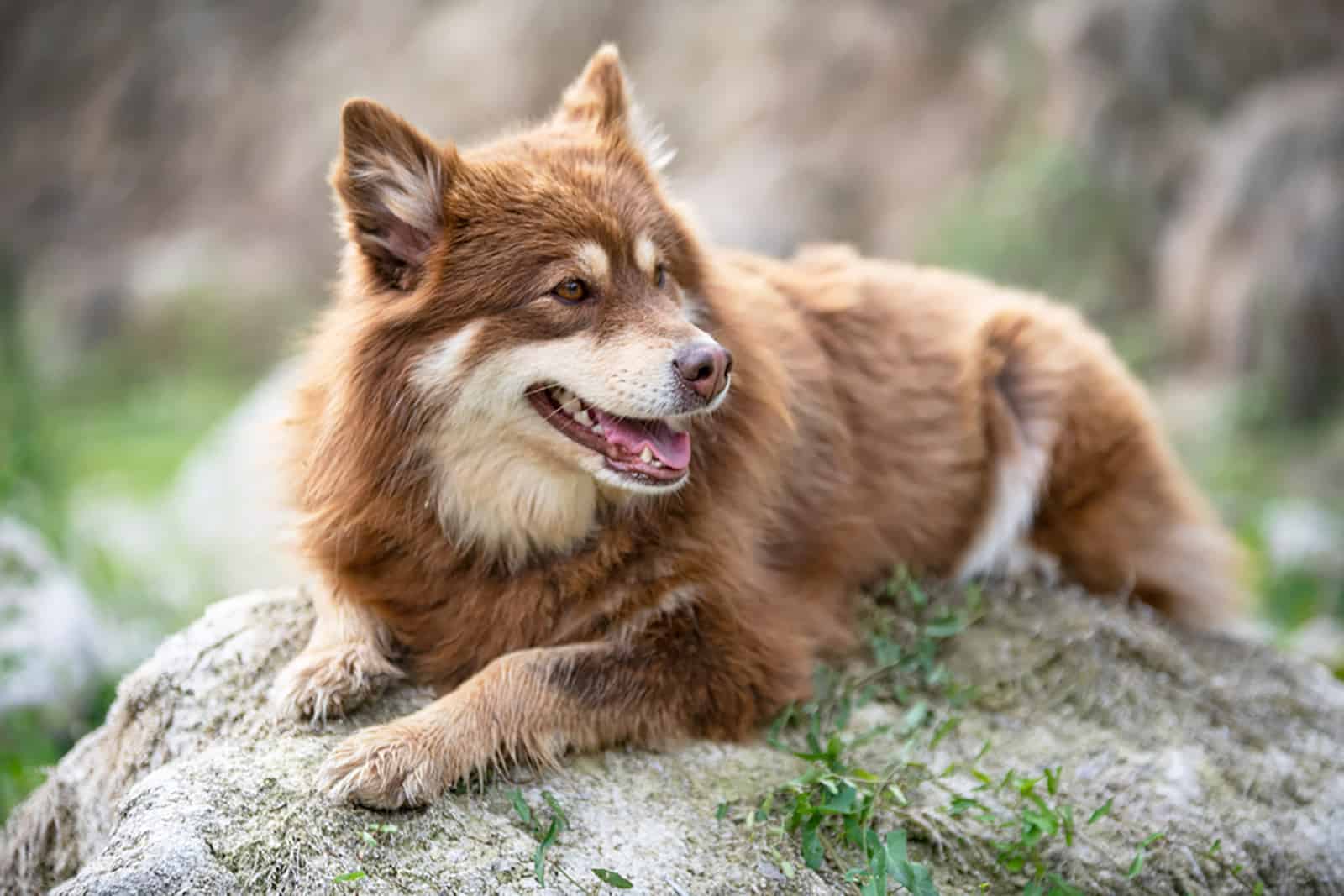
Remember how Huskies LOVE to howl?
Well, there are dogs that look like Huskies that howl even more!
The breed I’m talking about isn’t that recognizable or popular in the States. But, the official kennel club in America recognizes them as purebred dogs.
This is the Finnish Spitz, a foxy-like doggo that resembles our buddy, the Husky. You can say they’re a chunkier, orange version of a Husky, but they’re absolutely not the same.
The Finnish Spitz was purposely bred for hunting. These dogs are skilled hunters, whether they’re chasing down tiny squirrels or fast rabbits. It might not be a good idea to bring them into a home with small dogs.
Still, if you raise them the right way, you can expect your Finnish Spitz to act as an excellent watchdog. They’re alert and good judges of the situation.
Finnish Spitz dogs aren’t aggressive towards strangers, but they know how to react appropriately.
Another great bonus for this breed is their size. A Finnish Spitz is rather small and compact. If you provide them with enough outside time, you can easily get them to live in a city apartment. That is, if you manage to get this rare dog breed.
9. Saarloos Wolfdog
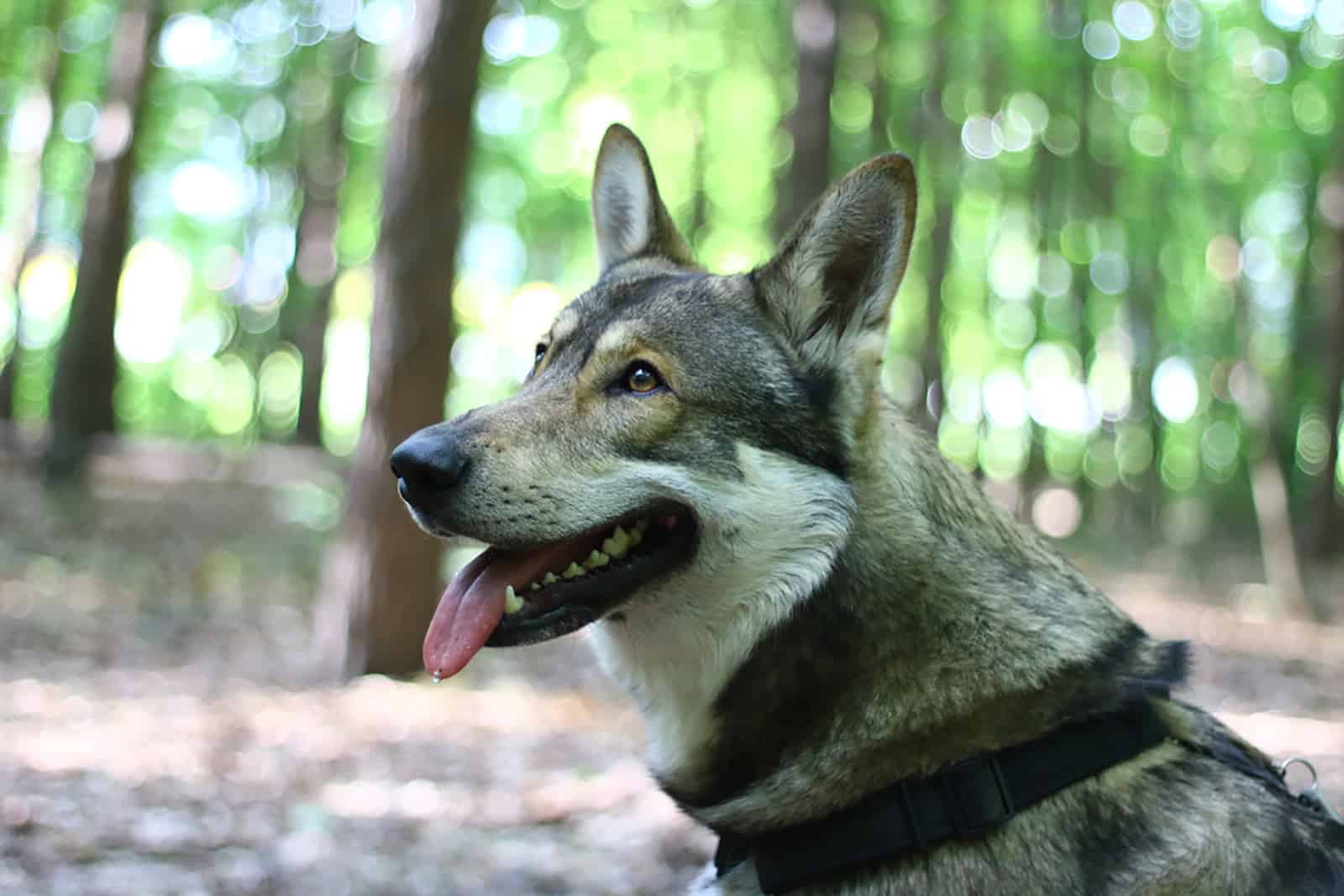
Their name might not say so, but Saarloos Wolfdogs aren’t as wild and aggressive as their wolf friends.
Actually, this unusual dog breed is considered one of the friendliest dog breeds in the world. Saarloos Wolfdogs are calm and peaceful – you can’t trigger them easily.
And, that’s a great thing! If you manage to get a Saarloos dog, you’ll be blessed with a terrific family pet.
What you should know before getting a Saarloos is that they can exhibit some typical wolf-like behavior. But, don’t be scared because they’re definitely not as aggressive as wolves.
A well-trained and socialized Saarloos Wolfdog can be very sweet and caring. You shouldn’t avoid these crucial training lessons, otherwise, you might provoke aggressive behavior.
Saarloos Wolfdogs are dogs that look like Huskies, but only in terms of their size and body shape. Saarloos doesn’t have the same coat colors as Husky colors. Their coat looks more like a wolf’s.
You may like Saarloos for it’s kind temperament and unusual appearance, but you’ll hate the fact these dogs have a rather short lifespan. On average, a Saarloos lives for a decade or so.
10. Icelandic Sheepdog
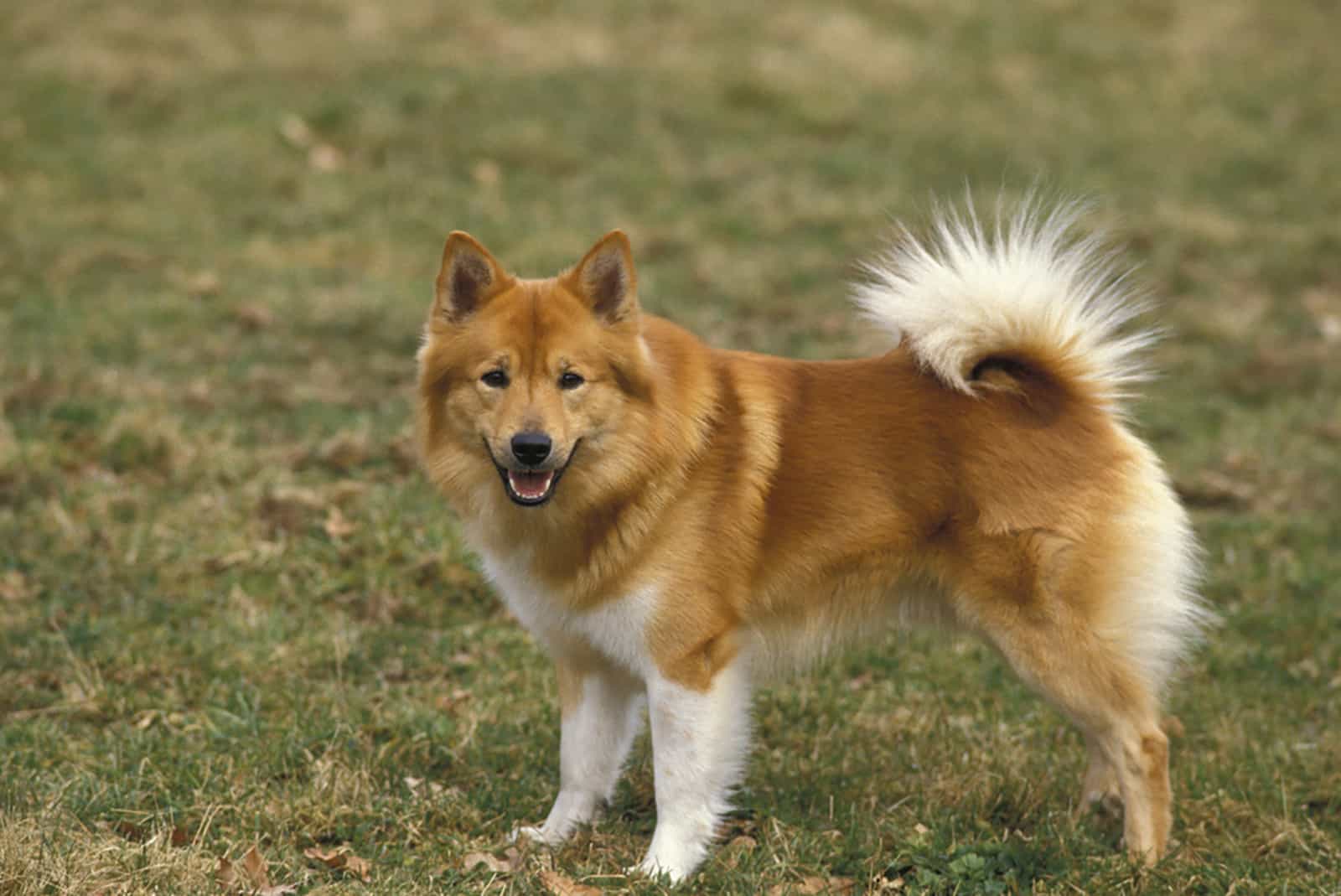
Have you ever seen a Viking dog?
Then you haven’t met the Icelandic Spitz, otherwise known as the Icelandic Sheepdog!
This dog breed was introduced to us by the Vikings. If you’re even a little bit interested in history, you’ll know that the Vikings used to sail across the world. It’s highly likely that these people arrived in North America way before Christopher Columbus did.
During one of their expeditions, Vikings may have brought the first specimens of the Icelandic Spitz breed along.
It’s a good thing too, because the Icelandic Spitz is a wonderful breed, unfairly forgotten.
The Icelandic Sheepdog has a lovely appearance. To be quite honest, they remind me of wooly Huskies in a lovely orange coat. But, people often find similarities between these dogs and Welsh Corgis and Norwegian Buhund.
These dogs are fun, and goofy, but overall friendly and charming. Even though they’re not meant as guard dogs, Icelandic Sheepdogs will always stay alert and keep an eye out for your safety.
The Icelandic Sheepdog can be a great family pet. They’re good with kids and small animals and don’t really seem like aggressive dogs at all.
I’d definitely give this unique dog breed a try. After all, they’re Iceland’s only native breed and that says a lot!
11. Kugsha
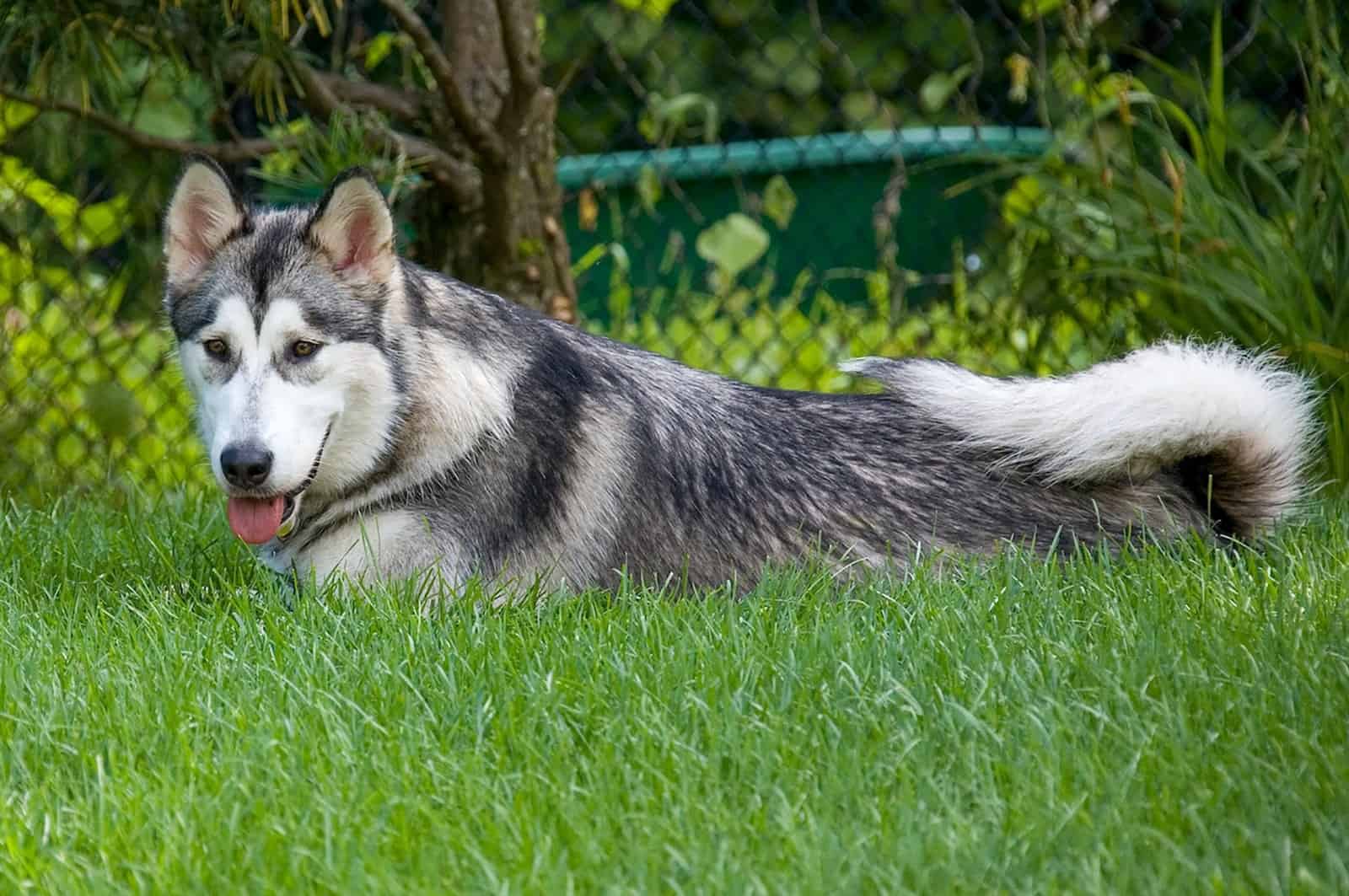
Hmm, perhaps the name Kugsha is too difficult to pronounce. How about the Amerindian Malamute? No, still too much?
No matter what you call it, it is still a domesticated dog, straight from the States.
When Kugsha dogs first appeared, they were called American Huskies.
Still, the name didn’t sound too promising, so the breeders decided to add an acronym using the first letter of the kennels that participated in breeding the first Kugsha dogs: Kuhlwind, Gordon Smith, and Habben.
One look at the Kugsha dog and you’ll realize why they wanted to call them American Huskies. Frankly, Kugsha reminds me of an agouti Husky. In terms of their appearance, Kugsha dogs are a bit bigger than Huskies.
They appear more muscular and tough. But, they are not dangerous by any means.
Kugsha is a genuinely good boy. They love spending time with their owners and don’t seem to mind morning runs and afternoon snoozes.
However, I’d recommend you don’t bring them into an apartment, since they’re highly active and need lots of space to roam around.
If everything turns out well, a Kugsha might live up to 14 years. That’s a lot of time for people in the park to admire your unique doggo!
12. Keeshond
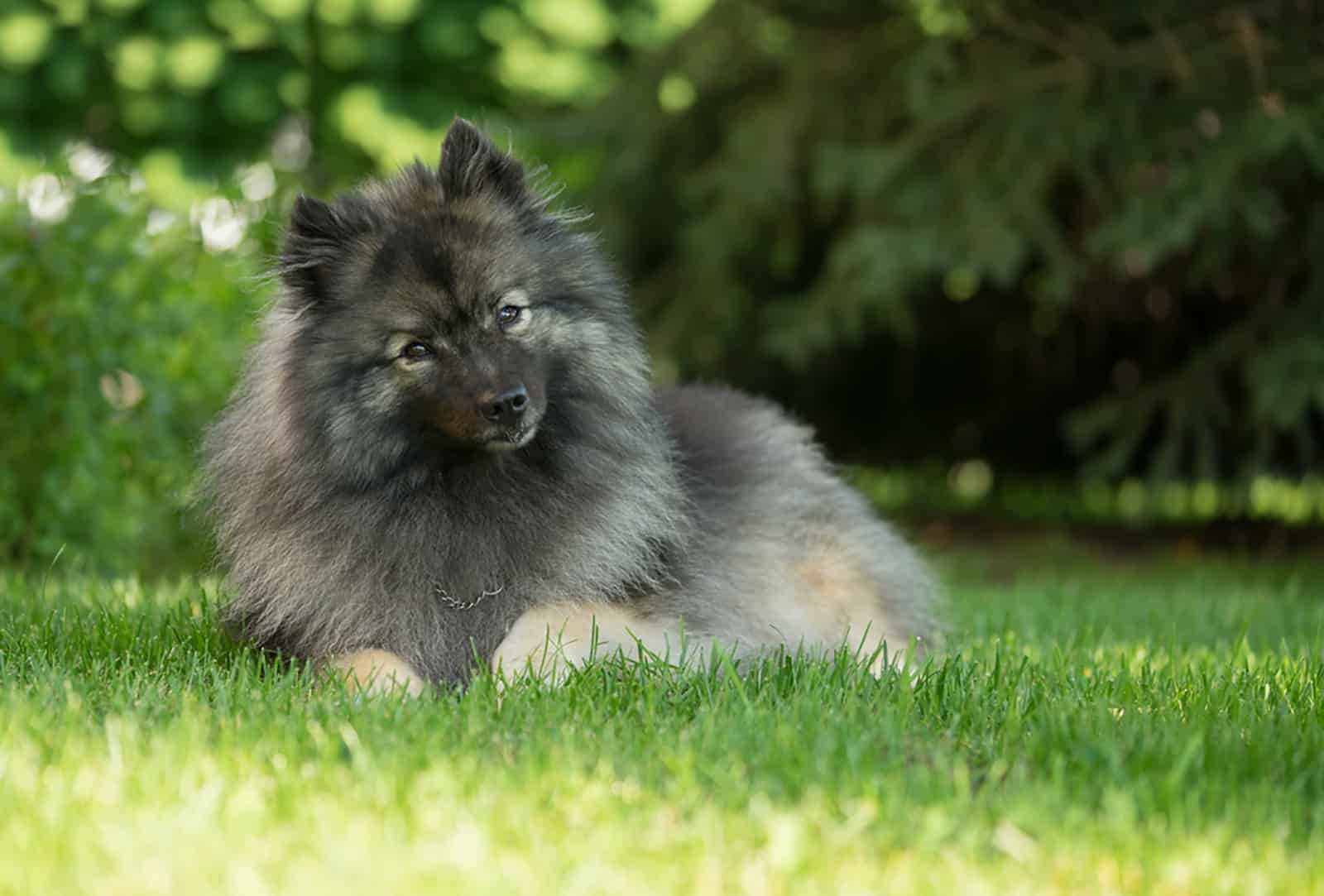
Keeshond might sound like a brand new designer dog breed, but the truth is different. Keeshond is actually a purebred breed dating back to the 18th century.
These unusual-looking dogs that look like Huskies aren’t from Siberia or Finland, for example.Their origin country isn’t covered in ice and snow. Surprisingly, Keeshond comes from Holland.
These dogs are distant relatives of the German Spitz. In my opinion, they look like someone crossed a Pomeranian and a Husky.
That’s because they have a rich coat, especially around their neck and face.
Keeshonds are medium-sized and sturdy dogs. They were used as watchdogs, monitoring barges on the Rhine.
Today’s Keeshonds are companion dogs. They get attached to their family members easily, thus they’re highly likely to develop separation anxiety if left alone.
If you own a Keeshond, which is quite unusual, you better make sure they’re socialized to perfection and they know that staying alone for a while isn’t a big deal.
13. West Siberian Laika
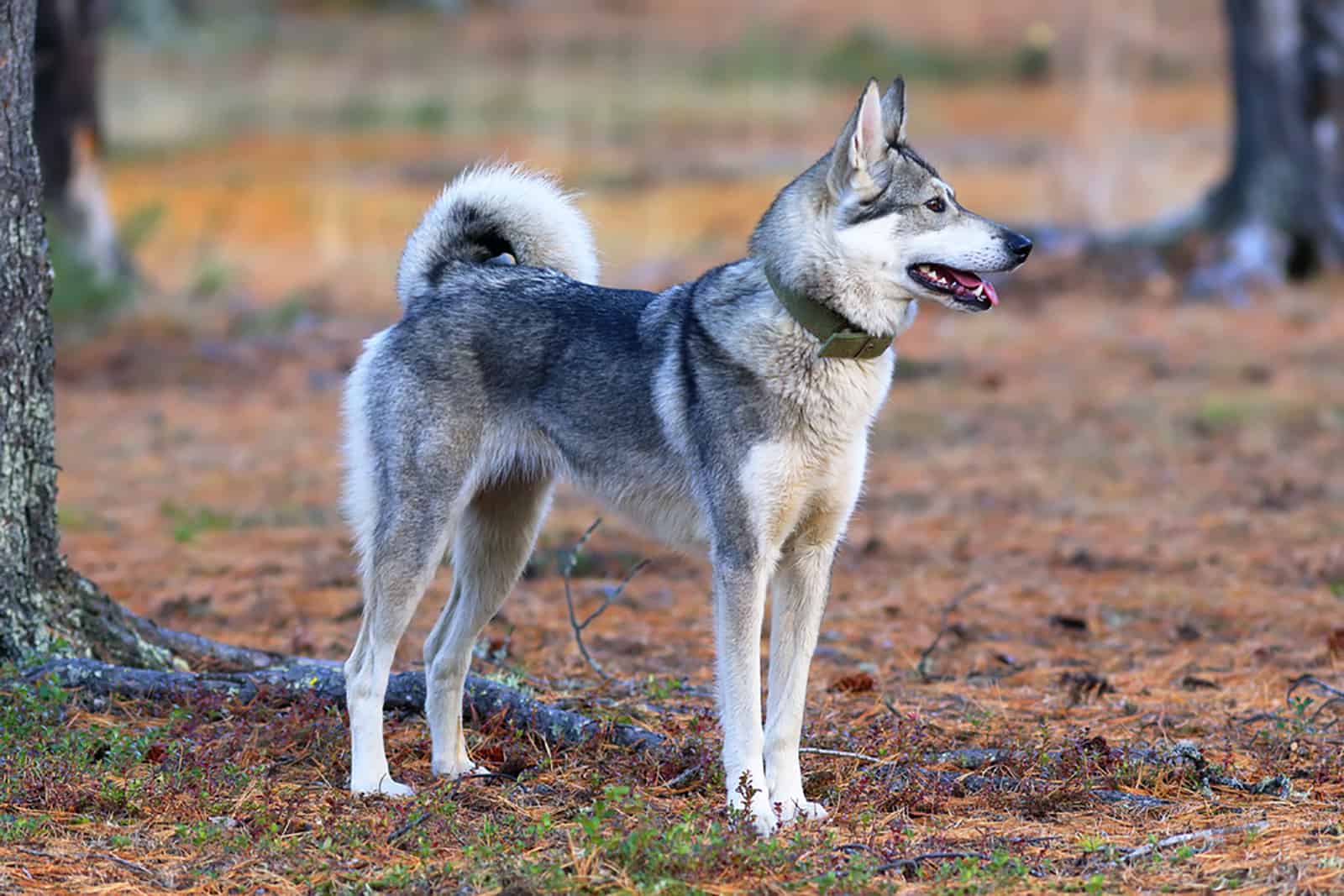
Since the Siberian Husky is from Russia, there have to be other Russian dogs here today, right?
Absolutely right!
The West Siberian Laika or the WSL is a fine specimen of a dog that looks like a Husky. Of course, WSL also resembles their wolf cousins, but only by appearance, not by temperament.
The WSL is one agile and fit dog. They’re active dogs of medium size, and they don’t like to stay idle. In fact, experts have named them hunting Huskies for their valuable hunting possibilities.
The West Siberian Laika is definitely one energetic dog with a high prey drive. Thus, be careful with the WSL and small children or tiny animals.
This is where proper socialization helps, so you don’t end up with a wolf-like appearance and a wolf-like personality.
What I must warn you about is that the WSL is not accepted by the American Kennel Club. The United Kennel Club recognizes this dog breed, so we hope the AKC will do the same soon.
West Siberian Laikas can be good family dogs, but only if you share lots of affection. They hate being alone, and if they’re bored, West Siberian Laikas will turn to destructive behavior.
Don’t mistake this Laika for the one that went into outer space. The West Siberian Laika is a breed of its own, while Laika, the space dog, was actually a mutt rescued from the streets.
14. Northern Inuit
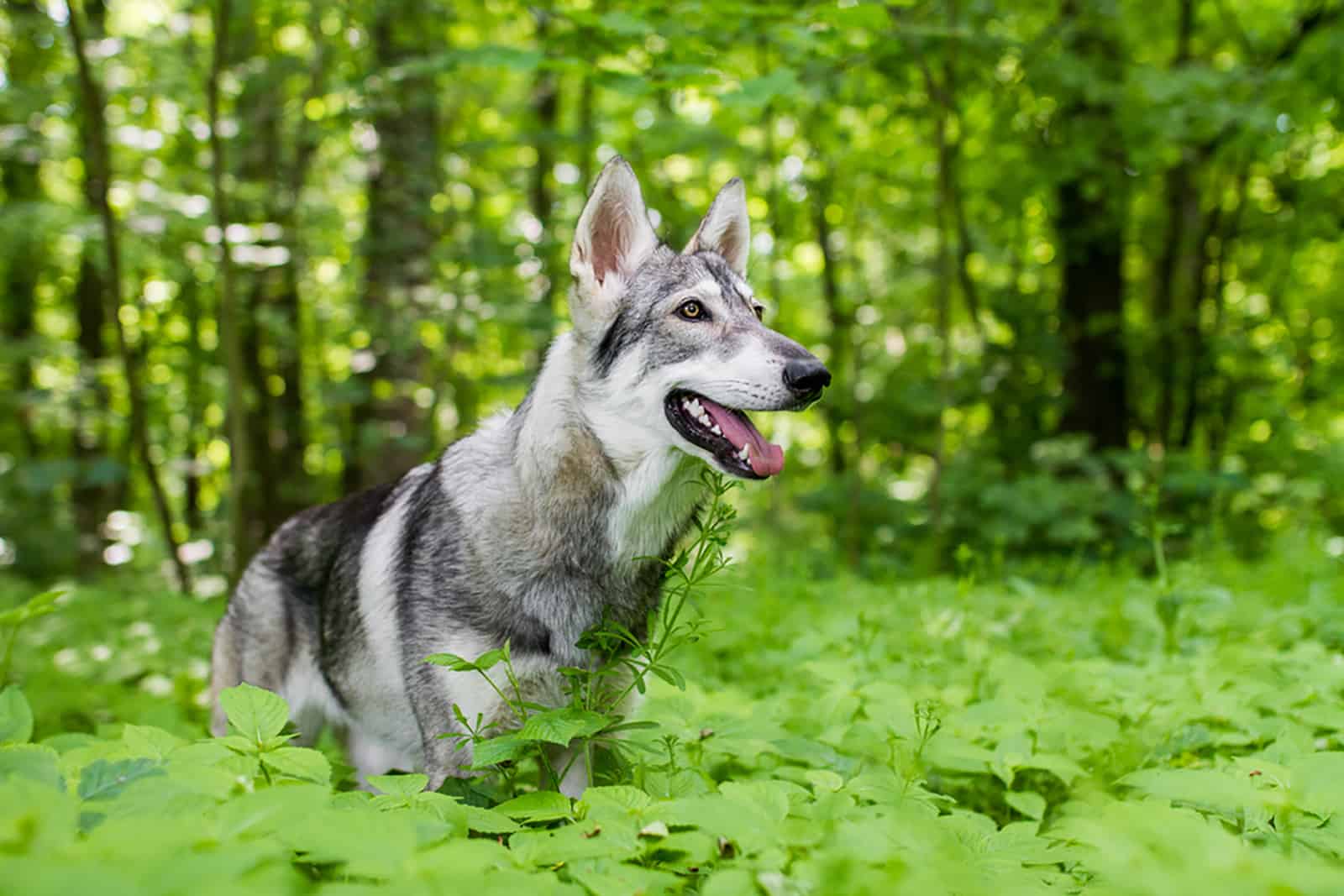
Okay, how come this Husky lookalike is not a real Husky?
That’s because they’re crossbreed dogs, designed back in the 1980s using Huskies, Malamutes, and German Shepherd dogs.
The whole purpose of designing the Northern Inuit Dog was to create a wolf-like canine.
However, all these dogs have from their wolf cousins is their appearance and a great desire to be outside all the time.
But, the Northern Inuit Dog is definitely one of the dogs that look like Huskies, both inside and outside. They have a lovely plush coat, thick and resistant to low temperatures.
As dogs with erect ears and long, fuzzy tails, Northern Inuit Dogs sure look a lot like Huskies. The only thing is, that the Northern Inuit is heavier than an average Husky. They are stronger, while Huskies are more agile and fit.
As far as their personality goes, Northern Inuit Dogs are kind and loyal. They love kids and other animals, so you shouldn’t have any major issues with them getting used to living with other pets.
The Northern Inuit Dog is even friendly towards other dogs. You can expect lots of buddies from the park, looking forward to greeting your pup!
15. Swedish Vallhund
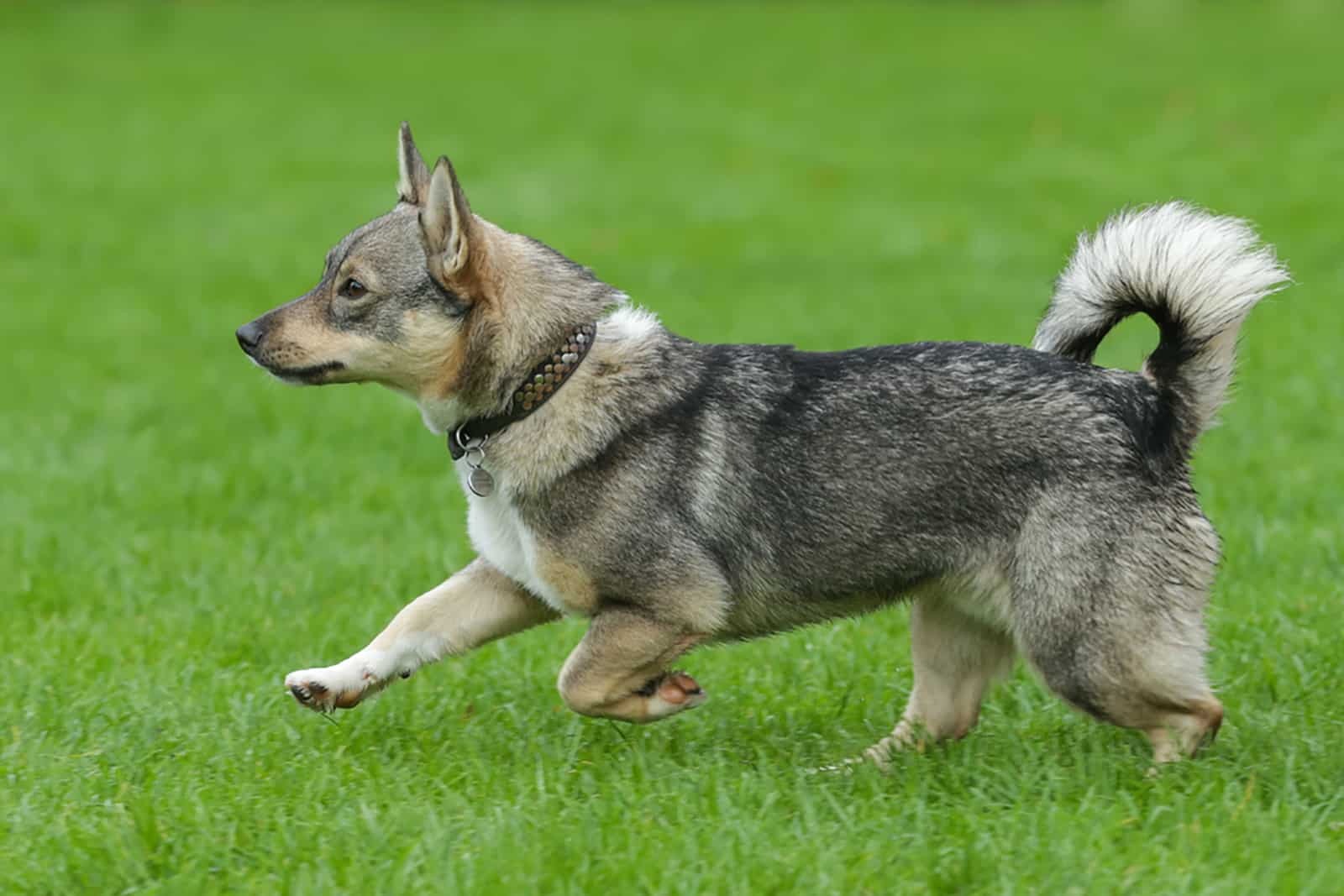
Okay, who put Horgi on this list?
Oh, wait, that’s not a Husky Corgi mix! That’s the Swedish Vallhund. Boy, they sure look a lot like Horgis.
The Swedish Vallhund is definitely a dog you won’t forget easily. At least, its big barks will echo in your mind.
Seriously, if you thought a Husky barking was terrible, wait until you hear the Swedish Vallhund.
Of all the dogs that look like Huskies, the Swedish Vallhund is one of the smallest ones. They’re short, with stubby legs, long bodies, and Husky expressions.
These are dogs from the North, carved out to fit into harsh climates thanks to their soft, thick coats. The Swedish Vallhund might be small, but they’re fast and agile.
As herding dogs for cow farmers, Swedish Vallhunds seem to always be running around, giving commands.
They may seem like they’re in charge, but when it comes to family living, Swedish Vallhunds are quite adaptable. They’re not focused on being the head of every operation.
Swedish Vallhunds are friendly and loyal. They love their family members more than anything.
16. Czechoslovakian Wolfdog
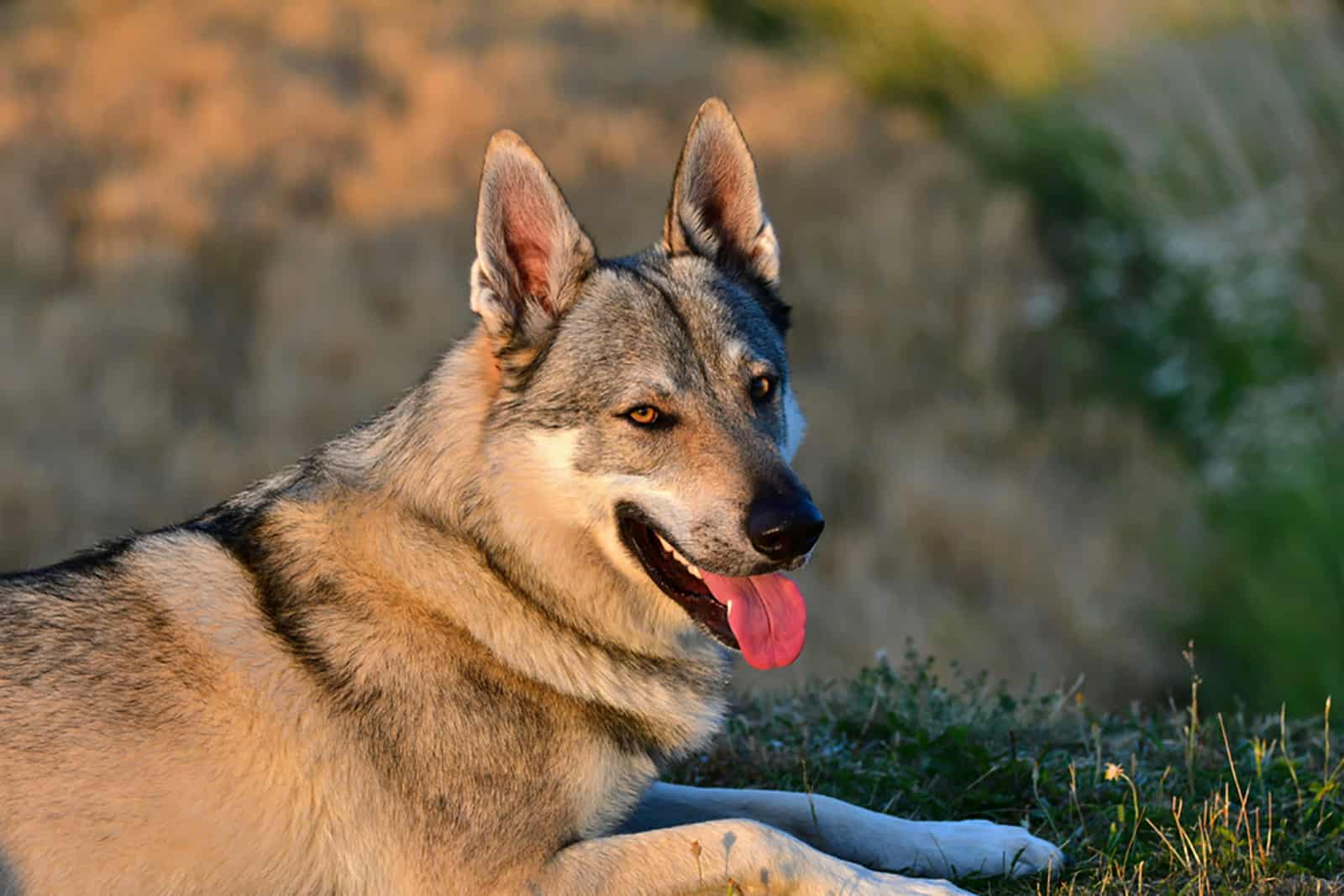
Some might say they are dangerous. Some might say they’re wild animals.
But, facts are facts, and the facts say Czechoslovakian Wolfdogs are dogs, not wild animals.
This fairly new breed is a result of need. When wolves and stray dogs began attacking villages in former Czechoslovakia, people realized they had to do something. Thus, they created a hybrid breed using German Shepherds and Carpathian wolves.
These dogs, that look like Huskies, are more wolves than Huskies will ever be.
What makes them resemble Huskies is their impeccable work ethic. The Czechoslovakian Wolfdog is an excellent working dog.
What they aren’t are companions and cuddlers. Some countries have banned this dog and it’s completely illegal to own them.
If you live in a country where the Czechoslovakian Wolfdog isn’t prohibited, then you’ll need to be an experienced dog owner to get one of these doggos.
The Czechoslovakian Wolfdog is loyal and determined, but they come with a high price.
17. Shikoku Dog
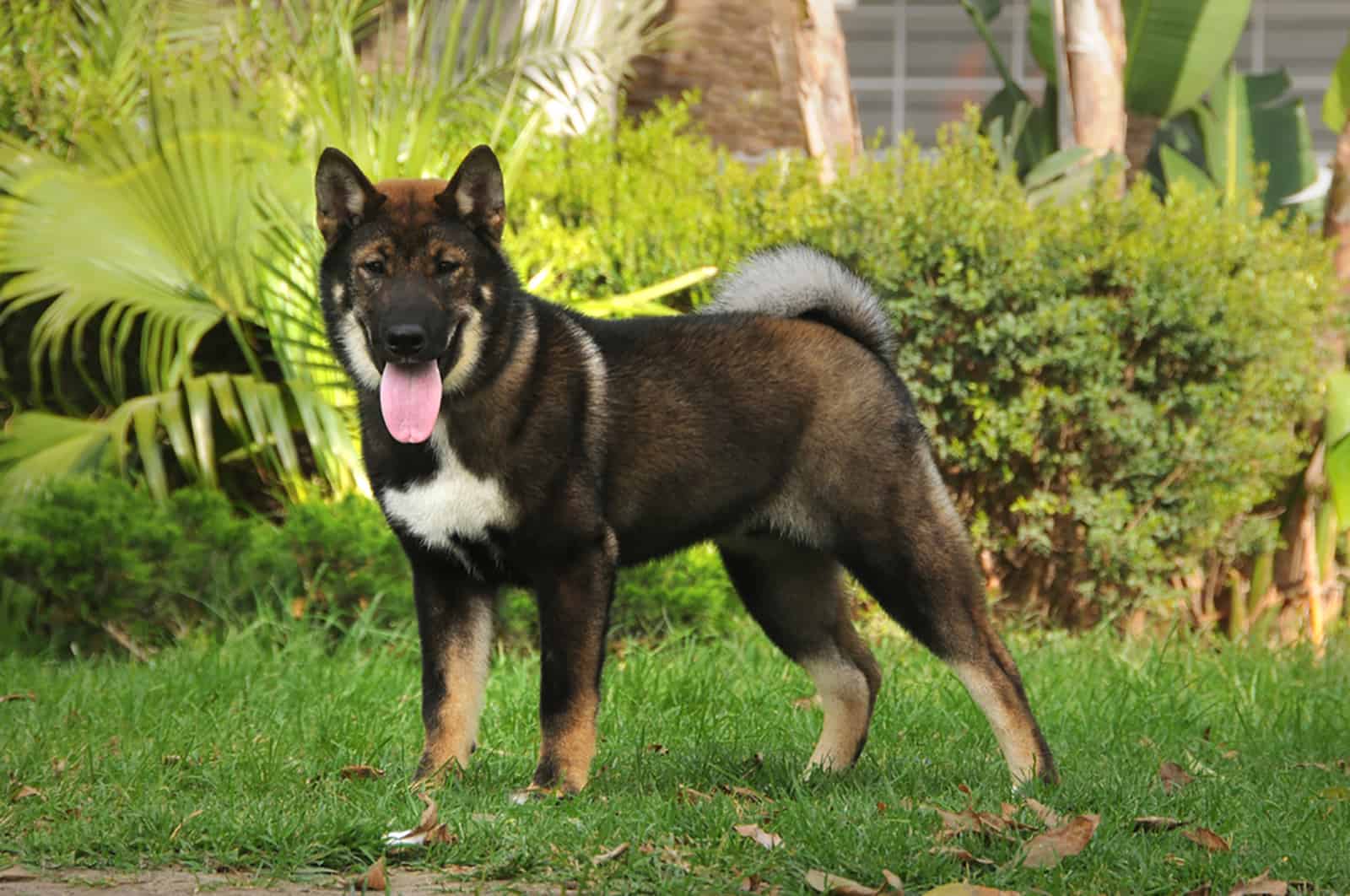
The Shikoku is one of the six dog breeds native to Japan. Much like its cousins Akitas and Shibas, Shikokus resemble Huskies in many ways.
For starters, Shikoku dogs have an impeccably strong work ethic. After all, they were bred to have a purpose, to serve humans.
Like many Japanese dog breeds, Shikoku was used as a protector, but also a hunting dog to chase boars.
Shikoku is a smaller dog compared to a Husky, but its heart, as well as its temperament, is big.
What you need to know, if you decide to own a Shikoku, is that they are easy to train, but even if trained, they should never be off-leash outside. Shikokus have strong instincts and might wander away, looking for adventures.
Sadly, a poorly-trained Shikoku will be highly likely to turn to destructive behavior and frustration if they’re not entertained for a while.
Before leaving your home without your Shikoku, think it through. Will your dog be okay to stay alone for a long time? Or should they tag along? I always pick the second option if it’s possible.
18. Canadian Eskimo Dog
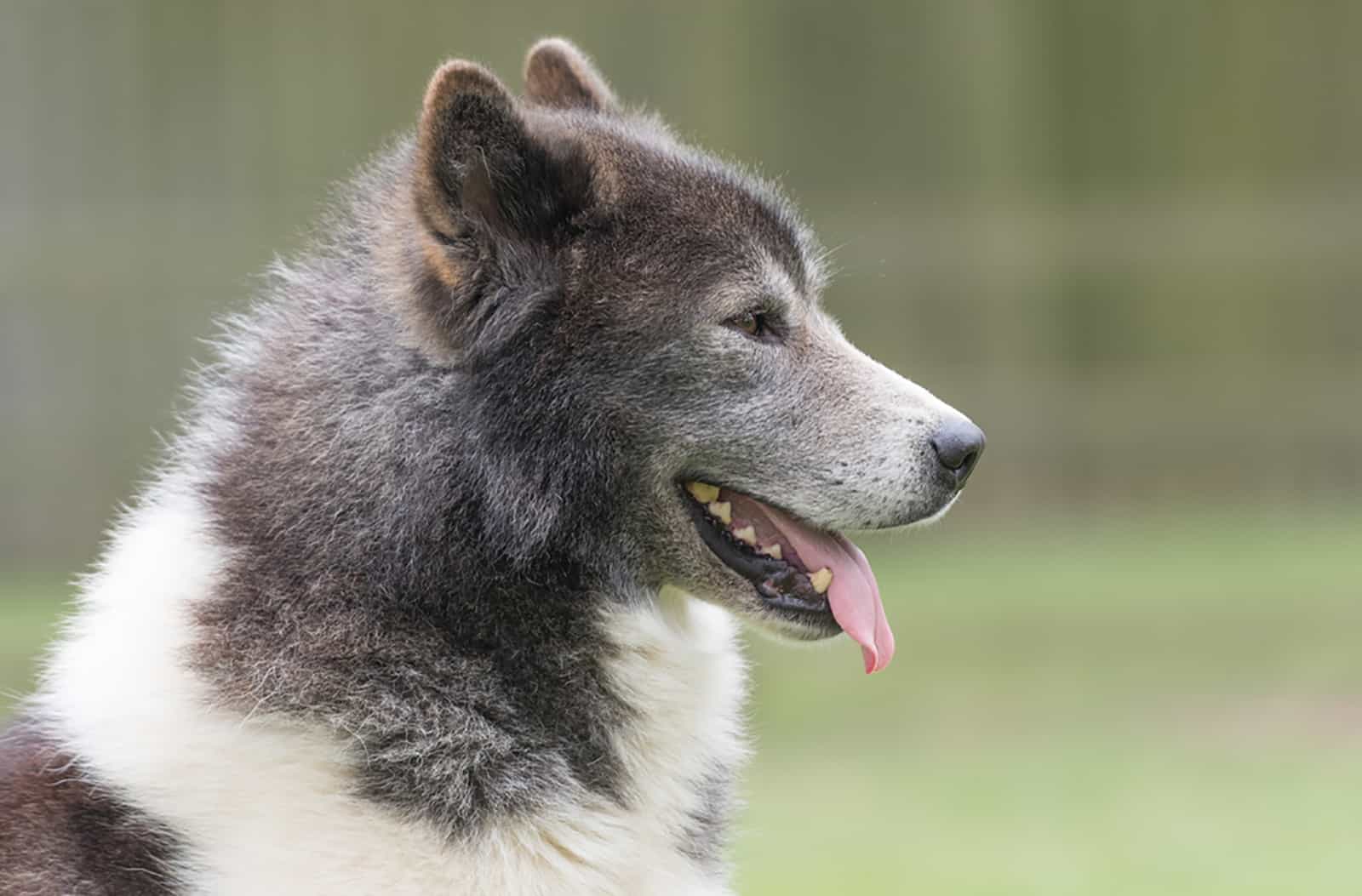
Canadian Eskimos are pretty badass. They can stand next to a polar bear and not mind it at all! No, they’re not crazy. Canadian Eskimos are simply brave. Trust me, it does take a lot of courage to come from distant parts of Canada.
People also call Canadian Eskimos Qimmiq or Exquimaux Huskies.
They are medium-sized dogs with a lovely appearance in the form of a thick, double coat with a fluffy undercoat.
But, people didn’t always know about the Canadian Eskimo dog. In fact, the breed wasn’t one of the popular dogs. It went so far that this dog breed was near extinction back in the 1970s.
Dog enthusiasts are doing their best to bring back the Qimmiq. However, the success of that mission is questionable.
Some dog lovers go so far as to claim that Canadian Eskimo can’t be domesticated pets. They claim they’re wild dogs and should be left in the wild.
Still, Qimmiqs deny that claim with their calm temperaments and willingness to show affection.
19. Alaskan Husky
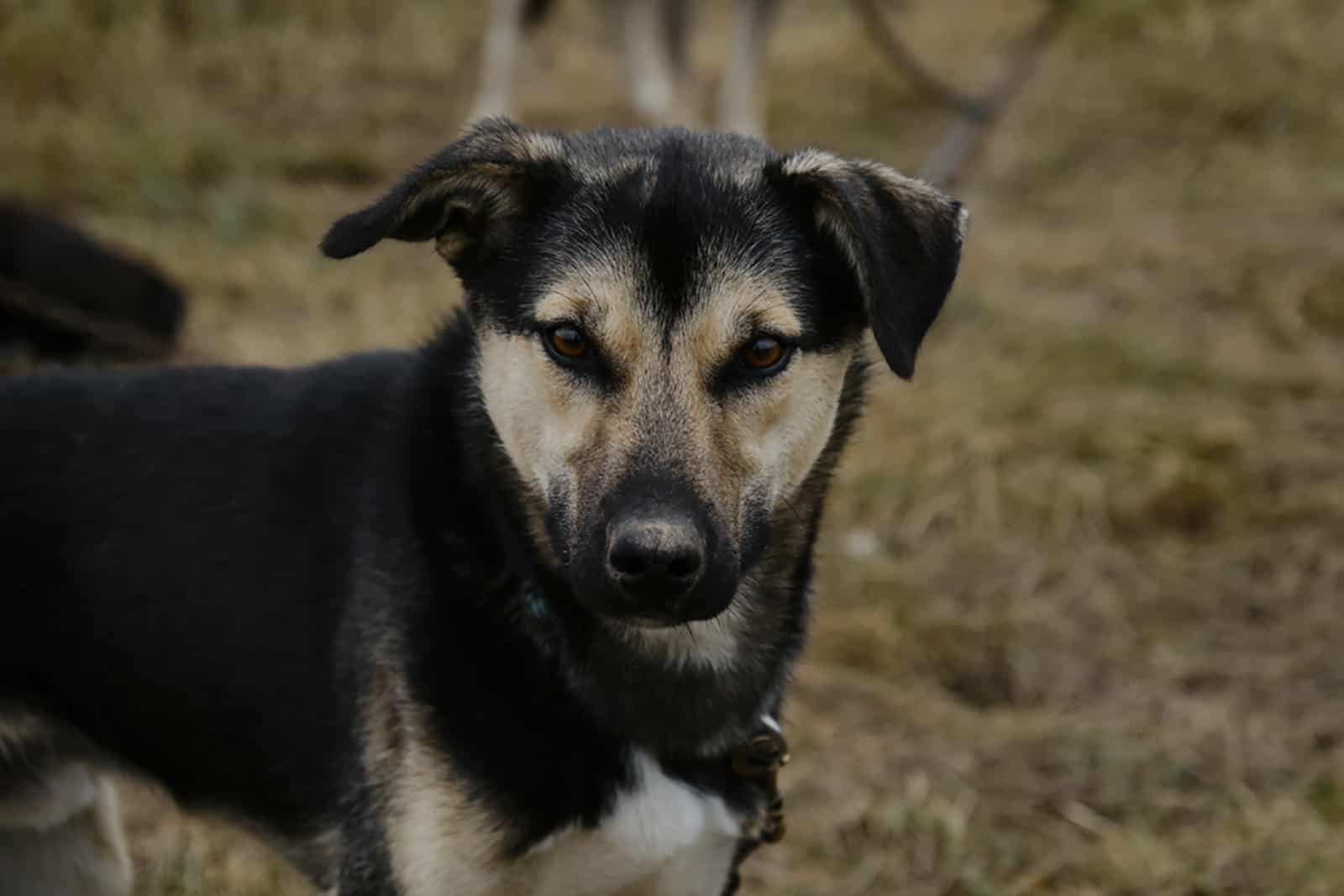
The Alaskan Husky is not a brother, but more of a half-brother to our Siberian Husky. Still, it’s one of the dogs that look like Huskies in terms of temperament more than the appearance.
The Alaskan Husky is not officially recognized by the AKC because they’re not purebred dogs. This is a fairly new dog, a Greyhound, Alaskan Malamute, and German Shorthair Pointers mix.
Since this is a crossbreed dog, we don’t really have a breed standard. Every Alaskan Husky looks different from the others. If it inherits a double coat from the Alaskan Malamute parent, it’ll be more likely to resemble a Siberian Husky.
Sadly, I can’t recommend the Alaskan Husky as a cuddle buddy. They’ll never be big cuddlers. These dogs are active canines. If they don’t get enough daily exercise, they become restless and destructive.
Mental stimulation doesn’t really work here, because they need to run, chase, and move.
Alaskan Huskies love to be active more than anything. If you need a hiking buddy, this is the dog that can endure more than you’d ever imagine.
20. Native American Indian Dog
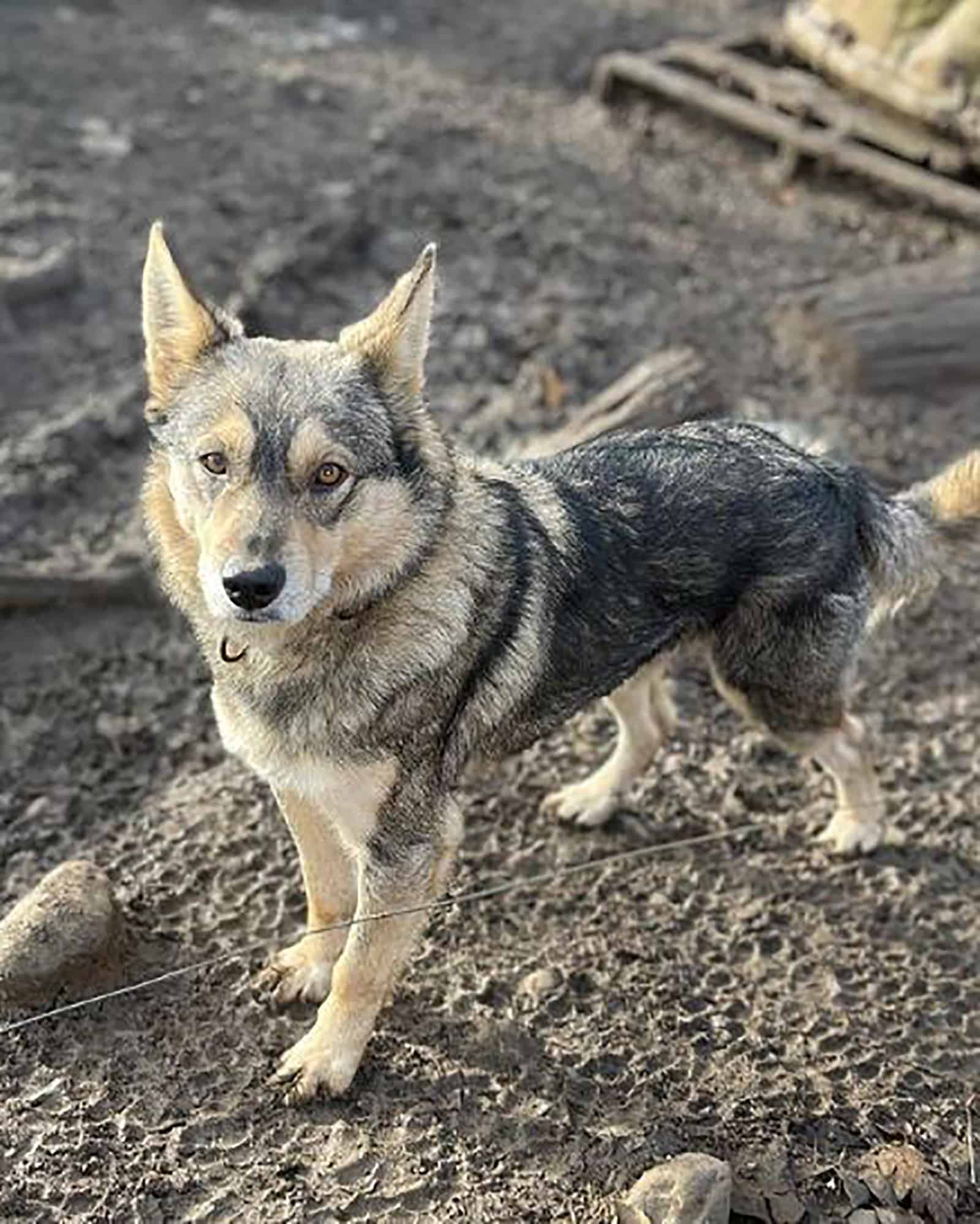
Photo from: @songdogkennel
Native American Indian Dog, or NAID, is what history has left us.
These dogs are actually crossbreeds inspired by native American dogs from the past.
Today’s NAIDs are big dogs, almost giants. But, what’s bigger than their body is their heart. NAIDs are extremely friendly and sweet. If you’re lucky enough to encounter one, you’ll see how kind they are, despite their wolf-like appearance.
NAIDs resemble Huskies a lot. They have a wonderfully-dense coat in lots of lovely shades, and even Husky-like eyes! My personal favorite is the tortoiseshell coat option.
If you could ask a NAID what its ideal dog owner is like, they’ll tell you that an active single person sounds pawfect!
What’s incredible about NAIDS is that they have an impressive lifespan. Some specimens of this breed can live up to 19 years!
That’s, actually, beyond impressive!
Sadly, the AKC still doesn’t recognize the NAID as a purebred dog. But, we truly hope they appreciate the rich heritage of these dogs.
21. Chinook

Some might say Siberian Huskies and Chinooks have only one thing in common: they’re both sled dogs.
However, if you look at the Chinook with straight ears, you’ll notice it does resemble his Husky buddy. Well, they have to resemble Huskies at least a bit, because they were bred using Huskies and Mastiff dogs.
The first Chinook appeared back at the beginning of the 20th century in New Hampshire.
Chinooks were used as terrific sled dogs. But, today’s Chinooks are simply great companions that have working tasks every so often.
Huskies aren’t aggressive, and they’re good with kids, so Chinooks are too. But they can be stubborn, so keep an eye out.
What’s so great about Chinooks is the fact they’re highly patient. They can stand kids pulling their ears and tail, playing roughly, or simply being kids.
Chinooks would never hurt you or your children. But, still, I always recommend socialization for all dog breeds.
22. Sakhalin Husky
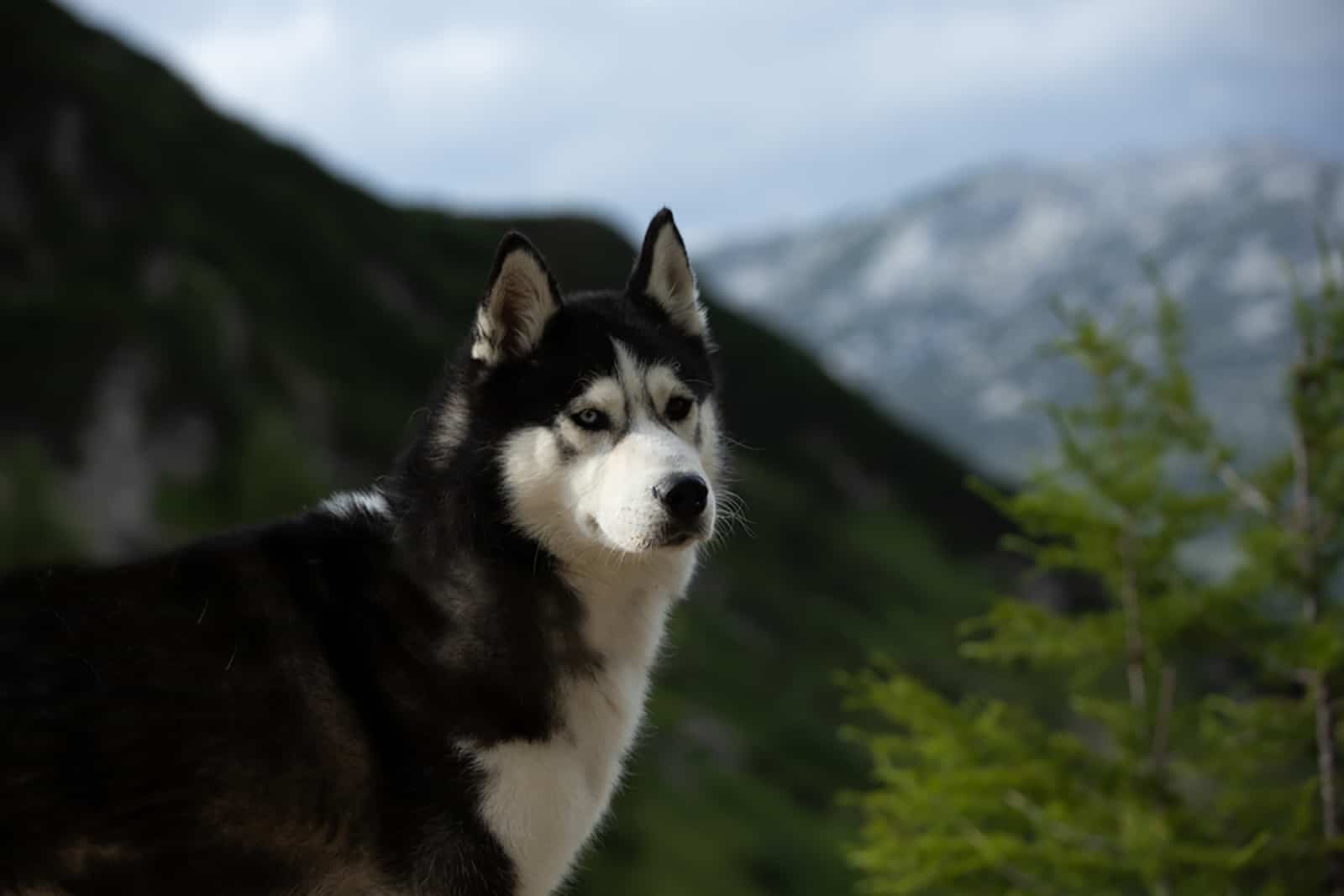
Lastly, we shouldn’t forget about a Husky dog that has gone extinct in the past couple of years. Sadly, the last specimens of the Sakhalin Husky breed are no longer with us. The last Sakhalin Huskies, Kumo, and Hana, haven’t been with us since 2011.
The breed was never too popular throughout history. They were always on the edge of extinction.
The reason I decided to mention them is that these dogs deserve it. This paragraph is in the honor of the tragically passed away Sakhalins.
Back when the Japanese explorers reached Antarctica in 1958, they brought along 15 sled dogs, and 15 Sakhalin Huskies.
The group of explorers had to be evacuated all of a sudden, and they had to leave their equipment and dogs behind.
No one thought the Huskies would survive.
Surprisingly, when they came back a year later, they discovered two Huskies pulled through. A movie was even filmed to honor them!
Sadly, all we have left from the Sakhalin Husky is a memory.
To Sum Up…
Dogs that look like Huskies are actually a lovely surprise. Who would’ve thought there were so many of them?
We all know about Alaskan Malamutes and their close connection to Siberian Huskies. But, rarely does anyone know about West Siberian Laikas or Swedish Vallhunds.
As you can figure out yourself, all of these dogs have certain things in common: their size, their coat type, colors of the coat, loyalty traits, hardworking genes, desire for enough exercise, etc.
If you’re really interested in getting a dog that looks like a Husky, then this is the only list you should consider checking.
Remember, some of these breeds aren’t for newbie owners. Some aren’t easy to find. Pick the best dog based on your preferences. Or, simply go with a Husky if you can’t make up your mind!
Read Next: 25 Different Types Of Huskies That Will Blow You Away
